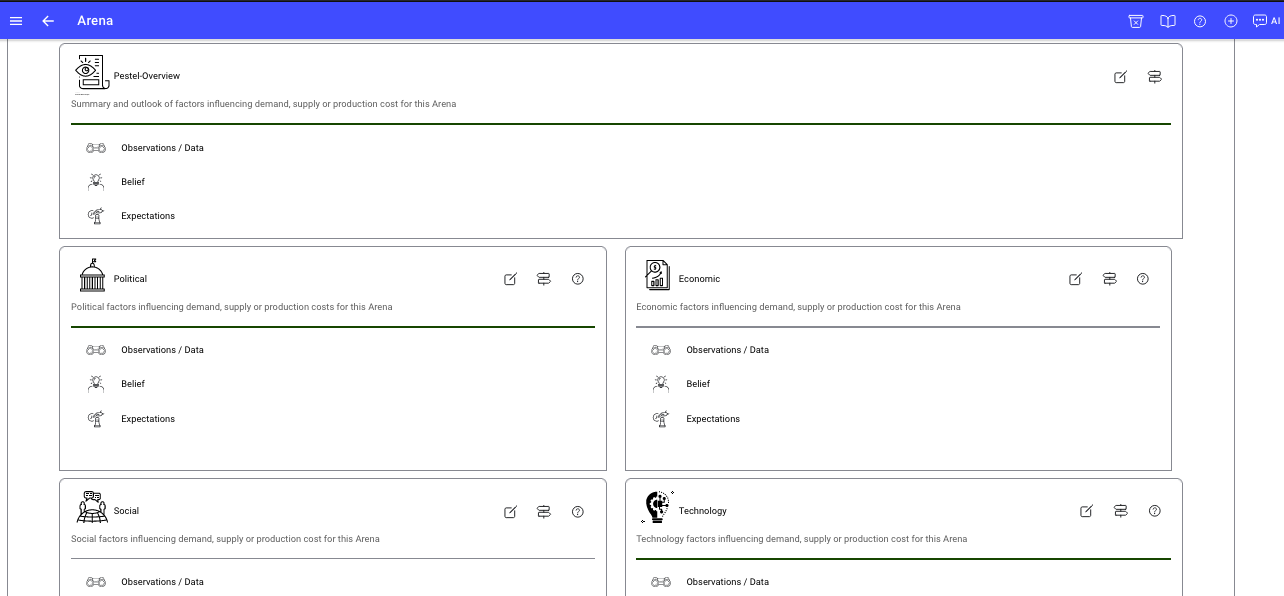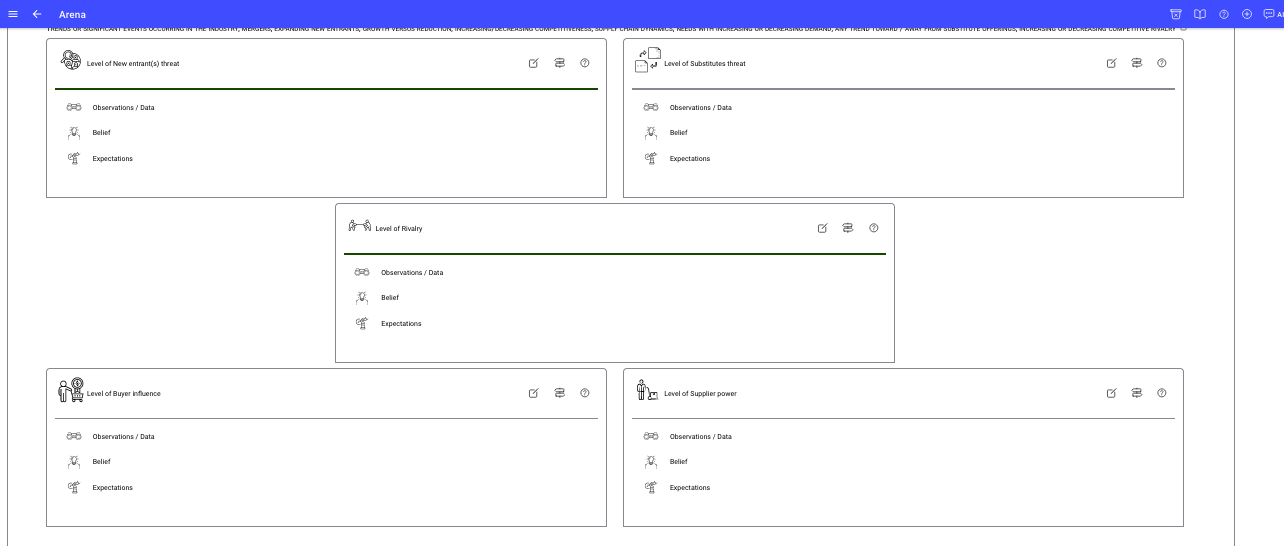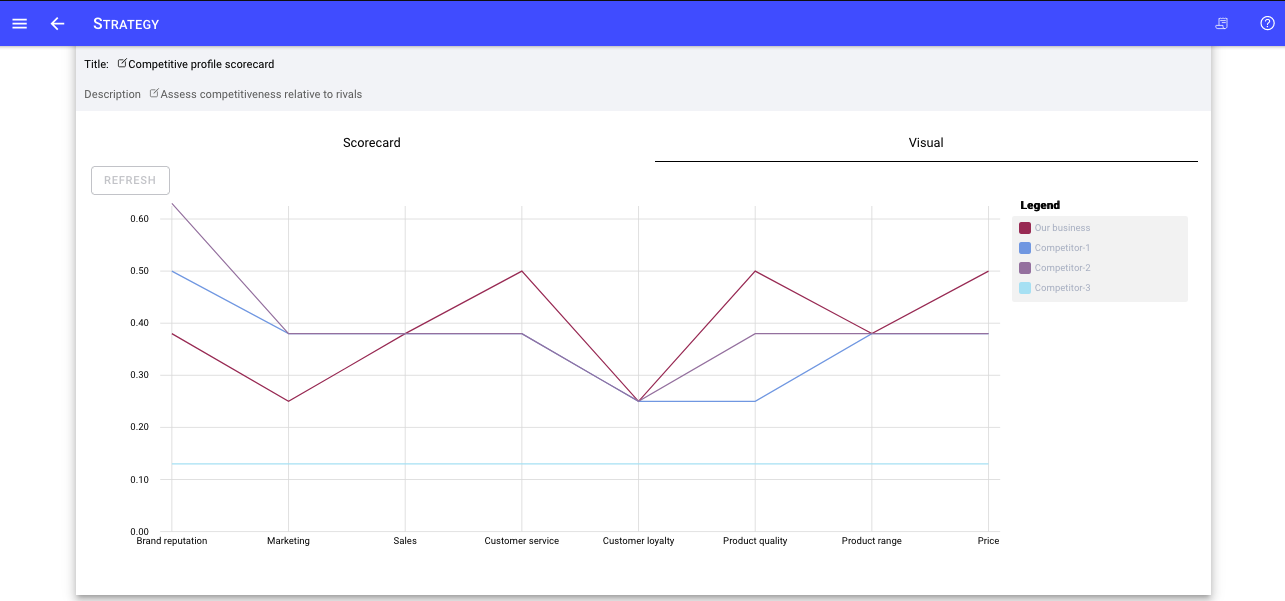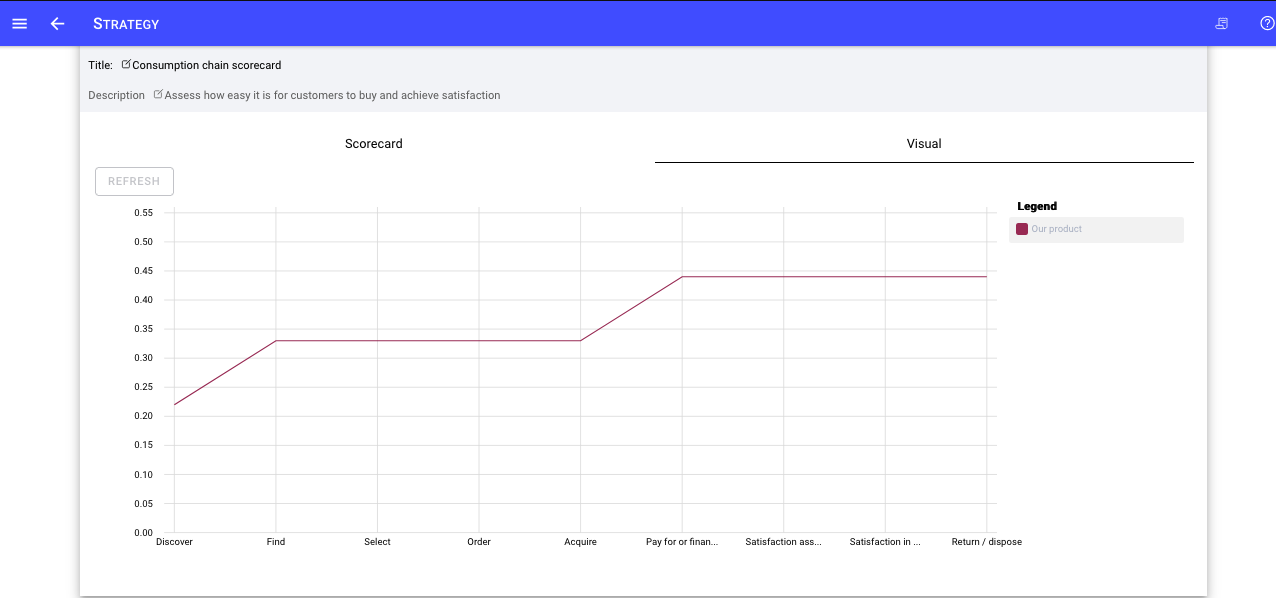Choices have costs! The costs canvas, is the valuable frontier of choice validation. In the Cost profile canvas you identify what costs are involved to deliver your value in a particular industry, industry segment, and geographic region and with that understanding validate - Can your business be financial sustainable with the Where to play and How to win choices.
In this section
-
Provide the purpose of the Value chain costs entity / canvas
-
Quickly differentiate fixed and variable costs
-
Build out a Value chain costs profile of the fixed and variable costs you will need to operate your Integrated value chain to deliver your value.
-
Associate the Value chain costs profile with an Arena (Industry, industry segment and geography)
-
Include relevant Value chain costs profiles in your strategic choice canvas.
The purpose of the value chain costs entity is to capture the different types of costs involved or expected to be involved in the delivery of value for a specific value chain and potentially for a specific Arena (geography, industry, industry segment). It is not an accounting tool to track those costs, but a strategic thinking tool to define and capture costs to identify, understand and optimise them.
Fixed costs do not change with increases/decreases in units of production volume, while variable costs fluctuate with the volume of units of production.
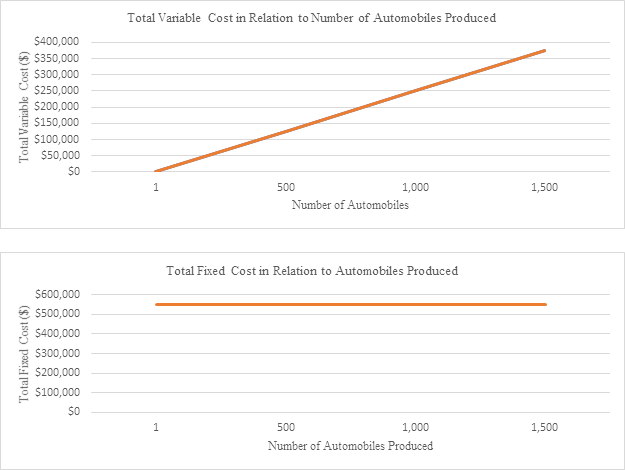
Different industries can have different demands for the degree of fixed costs required to enter the industry. Recall, from the Industry assessment and threat of New Entrants, that high fixed costs are a barrier to entry into an industry. Indeed, if technology or other changes (e.g. regulatory, supply arrangements) allow new entrants to convert fixed to variable costs, then, the threat of new entrants must be elevated.
Which costs when
Cloud services for technology infrastructure have anecdotally accelerated digital innovation. Previously, to establish a digital capability required up-front investment in fixed costs. Fixed costs included purchasing of I.T equipment and hosting it. With cloud infrastructure those fixed costs and delays associated with them have been replaced with variable and lower costs.
Variable costs
Reduce upfront investment and can be valuable in reducing the cost impact of failed business experiments and economic slowdowns. For example: when expanding into a new geography. By keeping facilities and other costs variable, offers opportunity that if the expansion does not succeed, then costs have been kept low and capital is not tied up in an arena that is not paying its way.
Alternatively, if there is an economic slow-down since the costs vary with sales, as sales reduce so do costs. Avoiding excessive capital being tied up in inventory is also obviously important.Fixed costs
Fixed costs elevate the base operating expense of the business. So in an economic downturn as sales decline, fixed costs remain the same. Contrarily, however, in the presence of economic growth, as sales and revenue increase the fixed costs remain the same. For example, having a reserved set of I.T infrastructure for your training your A.I algorithms signed up for a period of 3 years, is a fixed upfront cost. However, now if you run training all day every day or once a week, your costs do not change.
Fixed costs make sense where the opportunity to reduce risk and cost of operations are present or fixed costs are unavoidable.
From the Strategic choices canvas or the
related entities tab on any Entity but most particularly the
Integrated value chain entity, you can add a Value chain costs profile.
On the
Value chain costs canvas
you can link that to a particular arena.
So for example, if your business delivers its value proposition in two different
geographic regions (Arenas). You could have the same cost profile for both or a separate
one for each, even if they use the same Value delivery chain.
To identify the Arena the cost profile is related to you can add the Arena
to the Value chain costs canvas - Related entities.
If the
Value chain costs entity already exists
then you can link to it using the link icon ![]() .
.
Otherwise, if the Value chain costs entity does not exist
tap the add icon (far right). A dialog box will appear.
Record the title, description and team that will
own the Costs entity and submit. Once the Value chain costs is created then
you can link to that Value chain costs using the link icon ![]() .
.
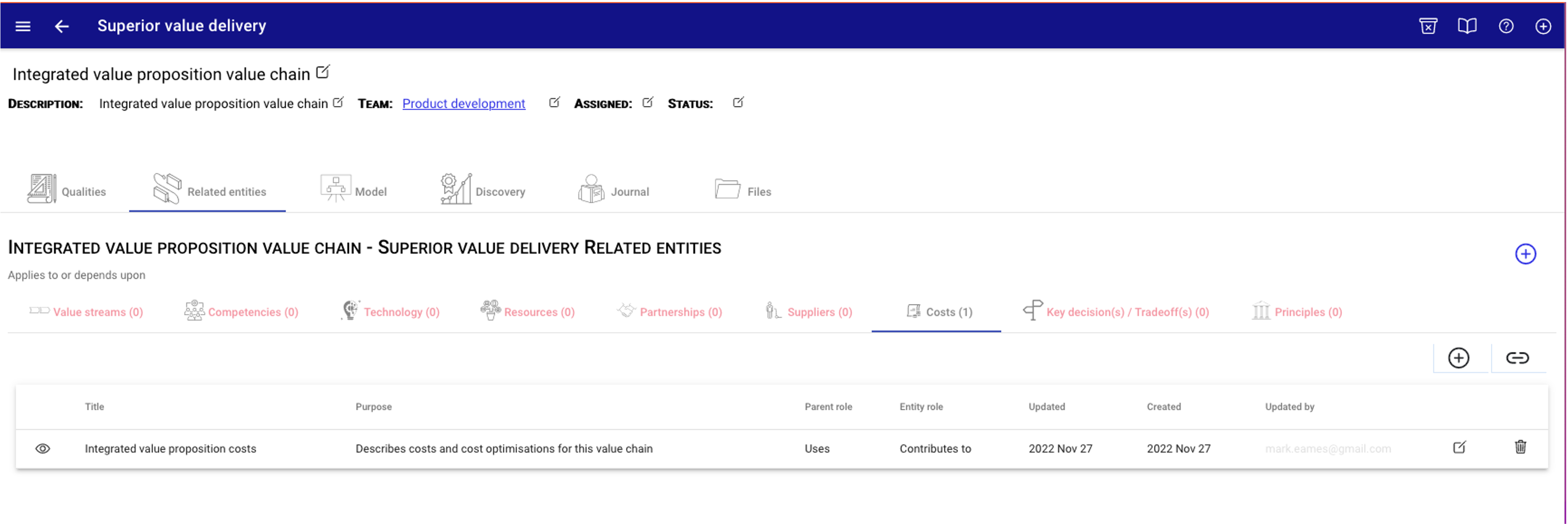
Once the Value chain costs entity is created and the value chain, it will be related to and Arena (see Linking the Value chain costs to an Arena below) is understood, you can build out the cost elements.
Fixed costs
At the top of the Value chain costs canvas is the Fixed costs. Here you can capture all the upfront and sunk costs that will not vary with sales or product/service volume. You can validate that investment in these costs is superior to any variable cost equivalents.
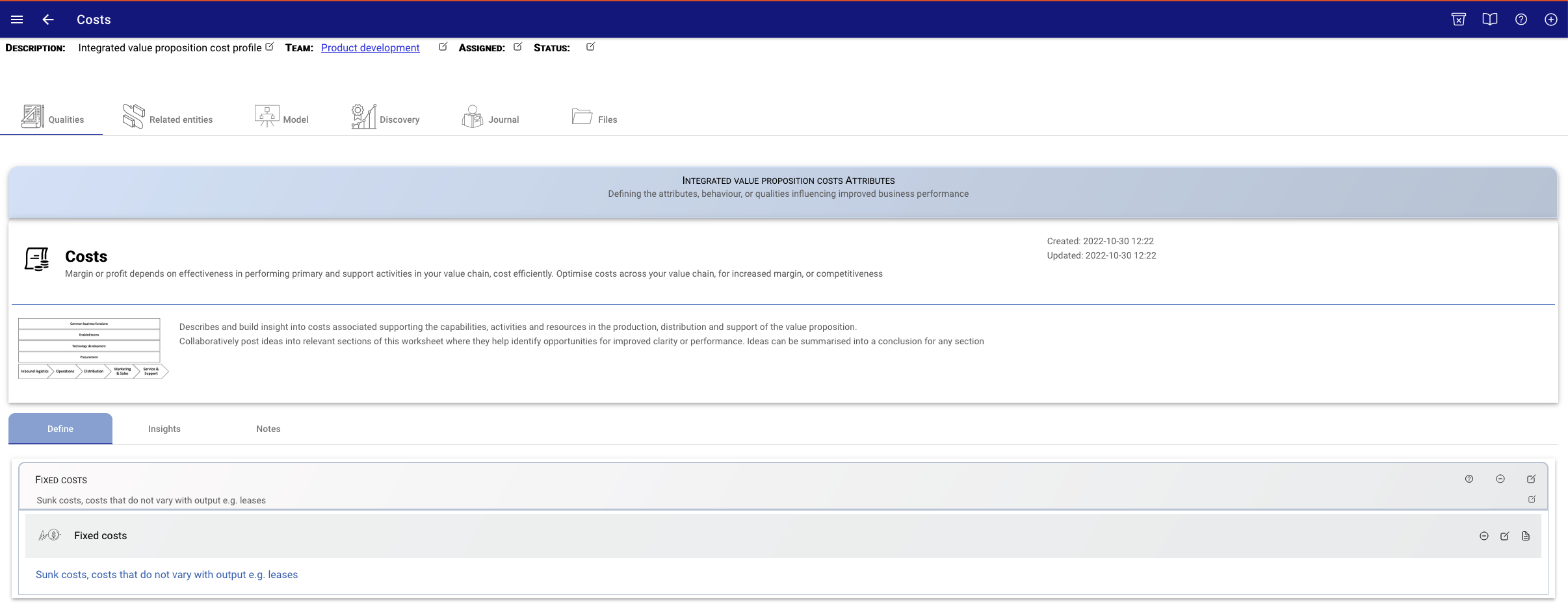
Costs for the phases of the value chain.
The remainder of the canvas is partitioned into the standard components of Michael Porters value chain. There are separate sections for:
-
Primary activities
Input management
Operations
Distribution
Marketing / sales
After sales service
-
Secondary activities
Procurement
Technology management
Human resources management
Management and administration
After sales service
You can rename any of the primary or secondary activities to align with your value chain.
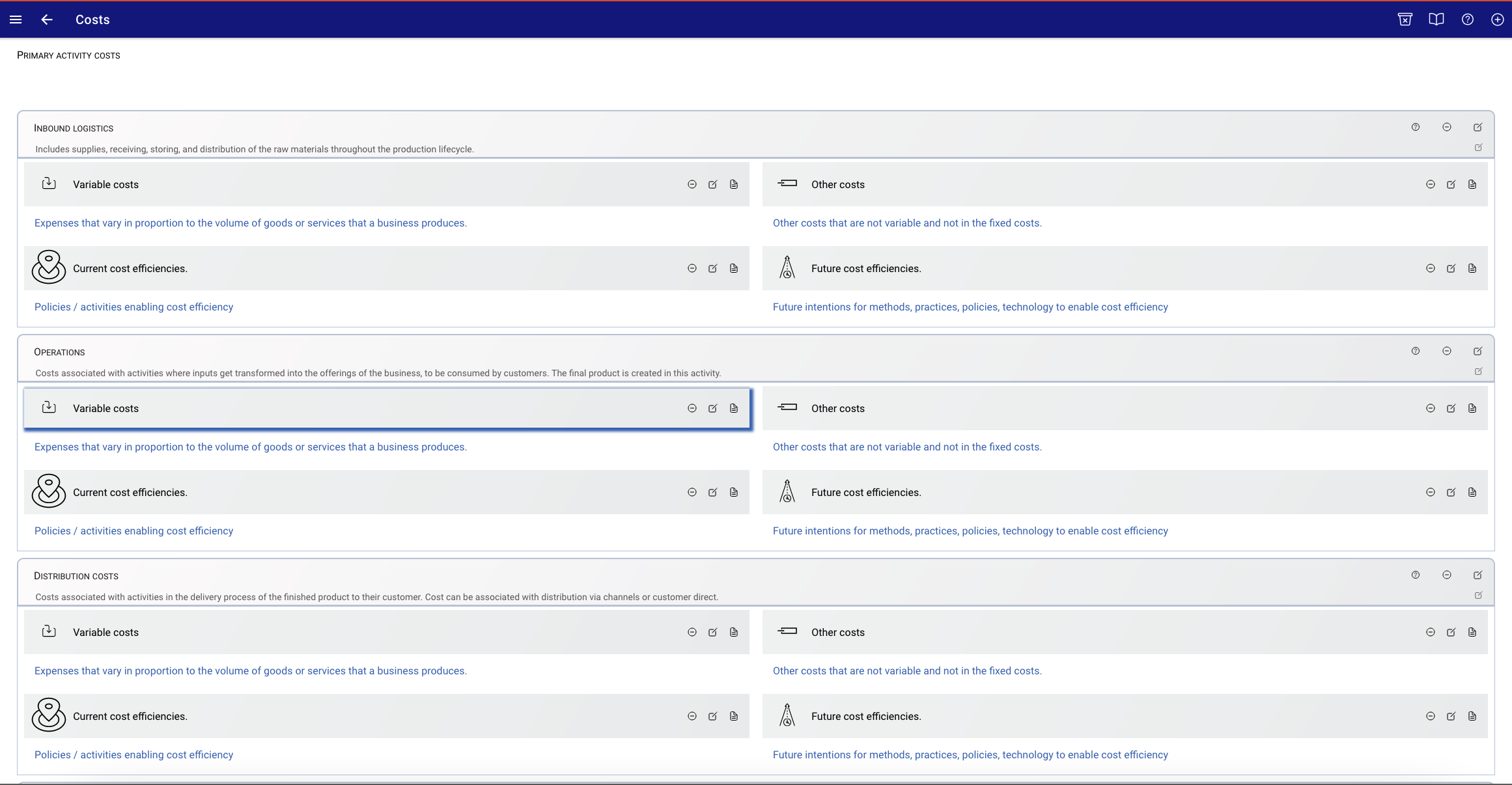
Capture and manage value chain costs
For each activity
-
Record your known, expected and possible costs.
-
Record what is currently being done to ensure optimised cost within that activity.
-
Identify future options to augment or replace what is currently being done to ensure optimised cost within that activity.
Linking the Value chain costs to an Arena.
If an Integrated Value chain supports a single Arena, then
you can link the Integrated value chain to the Arena and costs
in the Integrated value chain view. This will be a common scenario.
Alternatively, if the same Integrated value chain is applied to multiple
Arenas, then you can link the specific costs to the Arena by adding the Arena
to the costs.

Value chain costs relevant to the Strategic choices
can be added from the Strategic choices canvas. If the
Value chain costs exists
then you can link to it using the link icon ![]() .
.
Otherwise, if the Value chain costs does not exist
tap the add icon (far right). A dialog box will appear.
Record the title, description and team that will
own the managing the costs and submit. Once the Value chain costs is created then
you can link to that Value chain costs using the link icon ![]() .
.
You can use the procedures above to the complete the Value chain costs and link it to an Arena or Integrated value chain. You can use the procedures below to link the Value chain costs to any other entities you desire to include the scope.

You may wish to include specific resources, capabilities or other entities into the scope of your costs, to clarify the scope of the costs.
To do so choose the Related entities tab above the Value chain costs canvas.

Then if a tab for the Resources or Capabilities
is already present in the Related entities, you can add the Resource or Capability
by selecting the tab then linking ![]() the Resource or Capability from the dialog that appears.
the Resource or Capability from the dialog that appears.
This is the same procedure
you used to add a Value stream costs to an Integrated value chain or an Arena
to a Value chain costs canvas.
If there is no tab present for Resources, Capabilities or any other category of entity you want to add to to Costs. You can add a tab for the category

Click the add icon above all the tabs, and then choose the category of entity you want to have in the list of available tabs. Select that and submit. Now the tab for that category is available. You can add entities into the scope using the procedure above.

